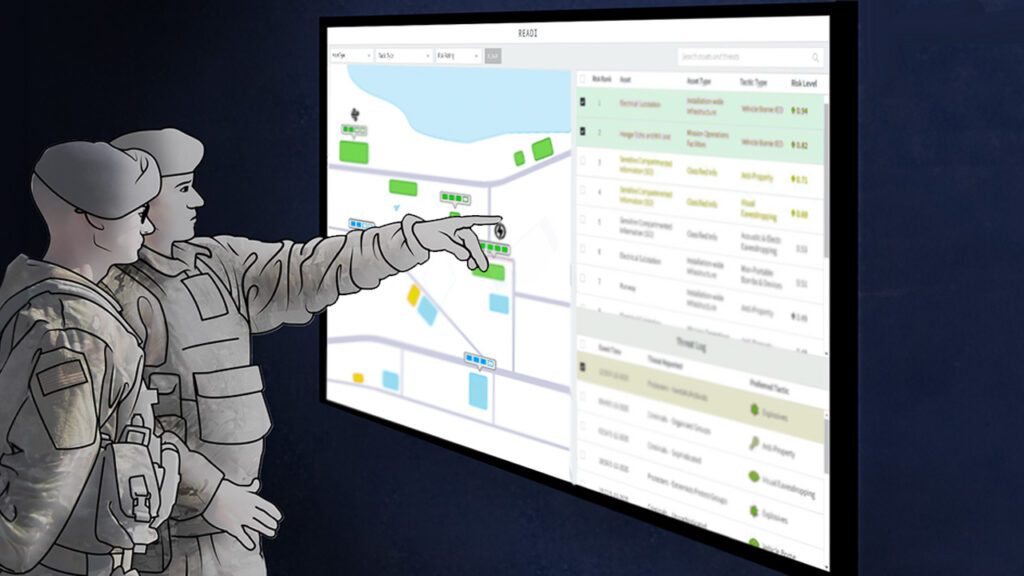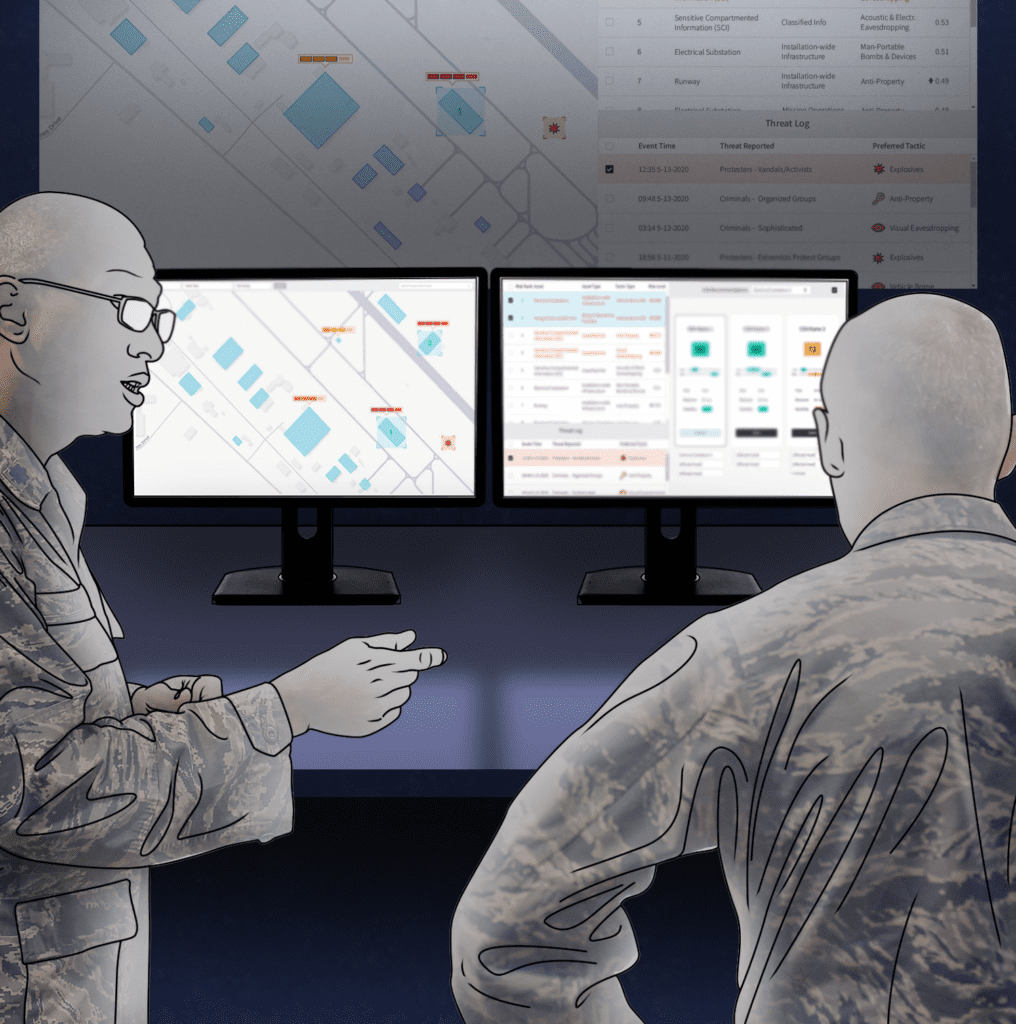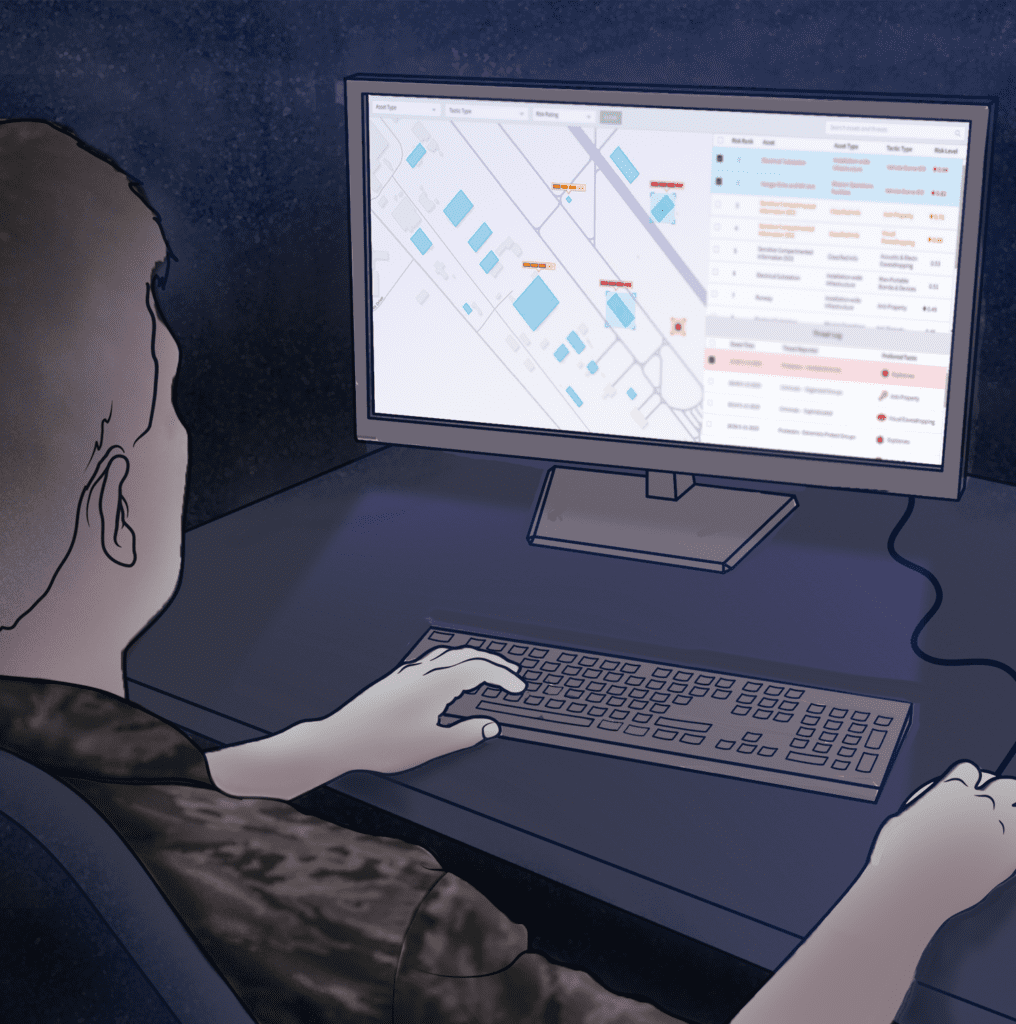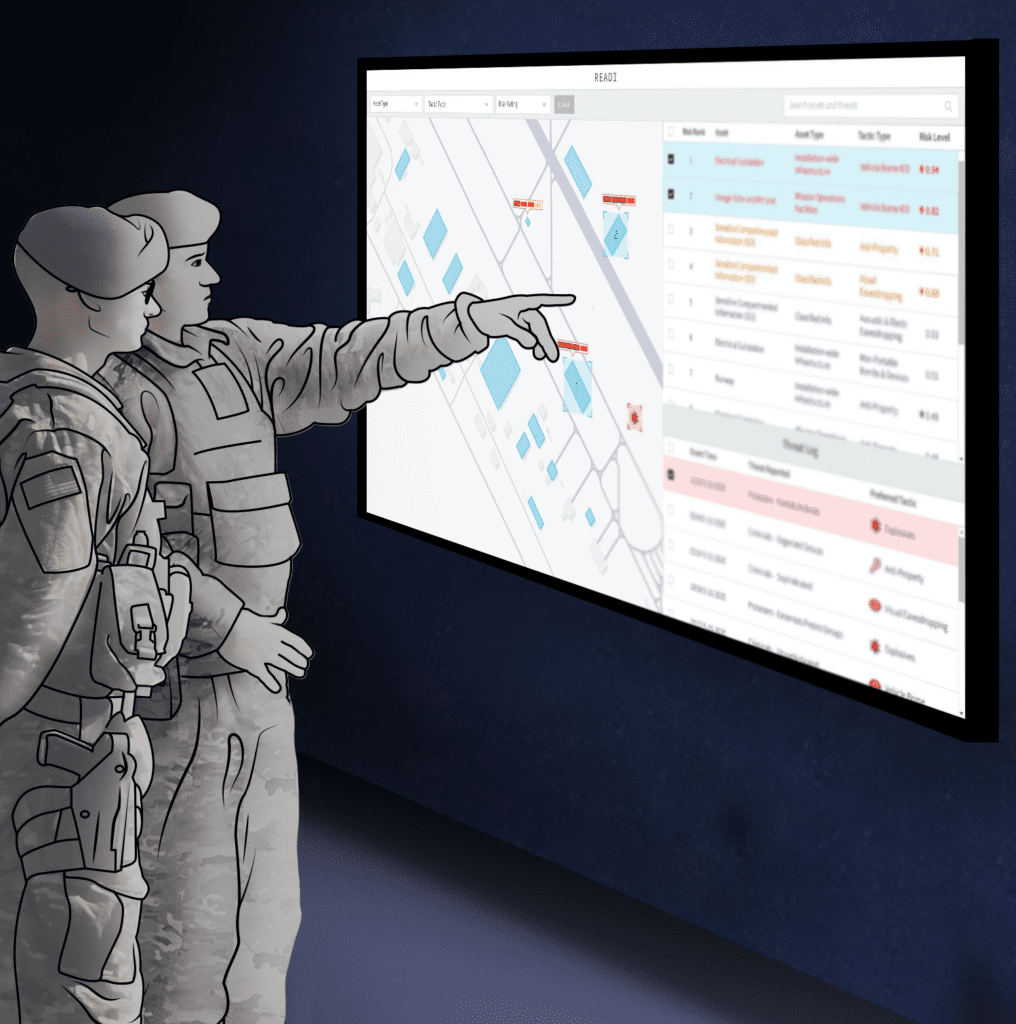READI
A risk-assessment tool for installation
security decision-making
A risk-assessment tool for installation security decision-making
Real-Time Assessment and Decision Interactive Toolkit (READI)
READI delivers relevant information tailored to the needs of each user in the security hierarchy. Funded by the Air Force Civil Engineer Center (AFCEC), READI uses probabilistic programming and deep learning techniques with ecological situation awareness visualizations to provide insights into securing Air Force installations for mission execution. Using hybrid AI techniques, READI characterizes potential threats and provides real-time risk assessments.

“By itself, an individual piece of information need not signify a threat, but when stitched together with others, it might. Risk assessments change accordingly, as do recommended courses of action. There’s an opportunity to catch problems sooner than you might have otherwise.”

Dr. Nicolette McGeorge
Senior Scientist and Principal Investigator on READI
READI complements risk assessment plans already in place. It draws on information from disparate sources then paints a more comprehensive picture of risk while factoring in critical elements to support situation awareness and threat response decision-making.
Because noise degrades much of real-time data, READI separates the signal from the noise. “It’s helping a security officer understand what should be acted on and in what order to prioritize response activities,” says Dr. Nicolette McGeorge, Senior Scientist and Principal Investigator on the READI project. The result can then update the risk assessment as well, leading to a more robust model. Probabilistic modeling efficiently handles dynamically noisy and uncertain environments, facilitating READI to provide rapid, explainable updates.
The foundation of READI is a deep study of the work and cognitive support needs to understand how users make decisions when interacting with complex systems. As a result, the tool is able to provide easily visualized contextual information.




READI across multiple platforms
Phase I of READI involved characterizing threats in the environment, creating probabilistic models of risk assessment and course of action using Charles River’s probabilistic programming framework, Scruff™, and then creating visualizations to support decision-making for security personnel. Potentially disparate pieces of information, when viewed together in context, can lead to critical insights, McGeorge explains. By itself, an individual piece of information need not signify a threat, but when stitched together with others, it might. Risk assessments change accordingly, as do recommended courses of action.
A similar approach will likely apply to evaluation of natural disasters, while factoring in environmental data, and is expected to form the basis of the next phase of the READI project. Phase II will focus on a wider range of threats caused by natural disasters such as hurricanes, floods, and fires. Under a related NASA-funded effort called WIMPLE, Charles River has created a hybrid AI-based decision support tool for wildfire risk assessment and mitigation.
Updating risk assessments according to new and emerging threats, as READI does, helps security and emergency management teams respond faster and more efficiently. “There’s an opportunity to catch problems sooner than you might have otherwise,” McGeorge says.
Commercial applications could extend to use by emergency management organizations of municipalities and even for security management of large events.
Contact us to learn more about READI and our capabilities in user interfaces and human-machine teaming and artificial intelligence.
This material is based upon work supported by the Air Force Civil Engineer Center (AFCEC) and the 772 Enterprise Sourcing Squadron (ESS) under Contract No. FA8051-22-C-0008 and FA8051-20-P-0004. Any opinions, findings and conclusions or recommendations expressed in this material are those of the author(s) and do not necessarily reflect the views of AFCEC or the 722 ESS.
